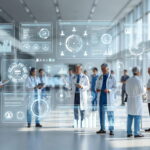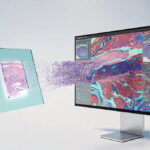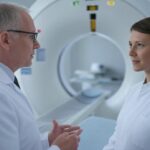Understanding biochemical and cell-based assays is key to developing relevant and timely drug targets for pharmaceutical companies. These two assays, while related in many ways, are fundamentally different in function.
While both types of assays serve the purpose of drug development and target identification – they differ based on complexity, cost, the scope of applications, the type of results generated, and the accuracy delivered.
In this blog post, we will discuss when it’s appropriate to use biochemistry vs cell-based assays and review their critical differences as vital knowledge for developers engaging in drug discovery activities.
Typical Assay Procedure Steps
To ensure accurate results, the assay process typically requires multiple steps. Prior to each procedure, particularly for cell-based assays, lab staff must confirm that the microplates have been washed in the microplate washer. This step eliminates any leftover residue from previous assays and guarantees clear and precise results for the ongoing assay.
The initial stage towards achieving precise outcomes is to adequately prepare the sample for analysis through homogenization, filtration, or centrifugation. After that, an extractive process is done on the sample to concentrate the analyte of interest and separate it from other compounds that may interfere with its detection. Typically, this process involves chemical or physical techniques like distillation, solvent extraction, and adsorption/desorption.
The third step requires the utilization of methods and techniques to carry out a quantitative assessment and ascertain the analyte’s concentration in the sample. The results are then analyzed to interpret the concentration and determine its significance in relation to a standard or reference material.
Keep in mind that developing a complete assay can take anywhere between 6 to 24 months. Although it may seem like a lengthy process, it allows scientists to obtain precise results and conduct their research accurately.
Biochemical Assays Overview
Biochemical assays are essential tools for detecting and measuring molecules, cells, and biochemical processes in living organisms. Professionals use these assays to detect and study molecules such as proteins, enzymes, and antibodies. This enables a better understanding of cell function, disease development, and drug action. Biochemical assays are crucial for advancing our knowledge of biology in both laboratory and field settings.
Biochemical Assays Pros and Cons
Scientists use biochemical assays as powerful tools to study various biological processes. The assays are advantageous because they are highly sensitive, enabling the detection of specific molecules, even at very low levels in complex biological samples.
Although biochemical assays are beneficial, they also have some limitations. They tend to consume a lot of time and need specialized know-how. Furthermore, there could be inconsistencies in the findings due to diverse experimental conditions. Nonetheless, researchers in different areas find biochemical assays a precious resource.
Cell-Based Assays Overview
Modern biomedical research relies heavily on cell-based assays as they provide a controlled environment for scientists to observe cellular interactions and processes. These assays involve using live cells to investigate how cellular behavior is affected by stimuli such as toxins, drugs, and environmental factors.
Advanced imaging technologies and high-throughput screening techniques enable scientists to delve deeper into cell growth, morphology, and gene expression, yielding vital information on disease mechanisms and the discovery of novel drug targets. Because of these advancements, cell-based assays have become increasingly complex. As a result, they are now an essential part of drug discovery and other biomedical research fields, providing valuable information about how cells operate.
Advantages and Disadvantages of Cell-Based Assays
Scientists use cell-based assays to explore biological systems, diseases, and treatments. These assays are more accurate than traditional tests in showing how drugs work in the human body. That’s why they are particularly useful in research. Additionally, they can be used to examine intricate biological pathways and identify potential drug targets.
Even though cell-based assays are advantageous, there are certain downsides that need consideration like their higher cost, longer development period, and the need for specialized equipment and expertise.
Bottom Line
Biochemical assays and cell-based assays are both valuable laboratory methods. Determining the suitability of an assay is crucial for a research project. Biochemical assays provide data analysis that is quick and simple, while cell-based assays offer valuable information on how a system behaves in its natural surroundings. The choice of assay will vary depending on the nature of the research and the researcher’s available resources. Scientists should carefully consider all options to select the best experiment for their lab work.
Read Also
- Automated Healthcare Software Solutions: How Intelligent Platforms Are Redefining Clinical, Administrative, and Operational ExcellenceThe healthcare industry is undergoing a seismic transformation. Rising patient volumes, value-based care models, staffing shortages, and complex regulatory demands have prompted organizations to look beyond traditional tools and embrace advanced software automation. As providers search for innovative partners capable of tailoring these sophisticated systems to real-world workflows, many turn to MCSI (Managed Care Systems,… Read more: Automated Healthcare Software Solutions: How Intelligent Platforms Are Redefining Clinical, Administrative, and Operational Excellence
- Why Whole Slide Imaging Shapes the Future of Digital PathologyWhole slide imaging has become one of the most important developments in modern pathology. It changes how tissue is examined, how cases are shared and how pathologists collaborate with the wider care team. More than a technological upgrade, it represents a shift in how laboratories think about their workflow, their storage needs and the tools… Read more: Why Whole Slide Imaging Shapes the Future of Digital Pathology
- Comparing 2025 Dental Practice Management Software OptionsSoftware Key Strengths Potential Limitations Best For Dentimax • Offers both cloud-based and on-premise/server deployment. • Tight integration between imaging (e.g. X-ray sensors) and practice management, charts, treatment planning, imaging all in one. • Transparent pricing and relatively simple UI/usability; solid for small to medium general practices. • May lack some of the… Read more: Comparing 2025 Dental Practice Management Software Options
- Top Innovations in Dermatology and Skincare TechnologiesHave you ever wondered how skincare keeps getting better year after year? From fighting acne to reducing wrinkles, today’s treatments seem more advanced than ever before. The tools and techniques used by dermatologists today are smarter, safer, and more effective than those we had just a few years ago. These breakthroughs don’t just help with… Read more: Top Innovations in Dermatology and Skincare Technologies
- Telehealth and Beyond: Building a Connected Continuum of CareHealthcare is on the verge of a radical transformation. Technology no longer simply supports medicine; it actively shapes how care is delivered and experienced. Achieving a seamless continuum demands more than deploying tools—it requires intentional design, coordinated teamwork, and innovative platforms that adapt to diverse clinical and patient needs. This article explores key strategies for… Read more: Telehealth and Beyond: Building a Connected Continuum of Care
- Optimizing CT Protocols: The Hidden Key to Efficiency and Cost Savings in RadiologyIntroduction: Why CT Protocol Optimization Matters Computed Tomography (CT) is a cornerstone of modern diagnostic imaging, providing critical information across nearly every medical specialty. However, maximizing the value of CT — both clinically and financially — requires more than just advanced hardware. The real secret lies in the optimization of CT protocols. When CT protocols… Read more: Optimizing CT Protocols: The Hidden Key to Efficiency and Cost Savings in Radiology







